Brand Localization: The Ultimate Guide to Going Global Without Losing Your Identity
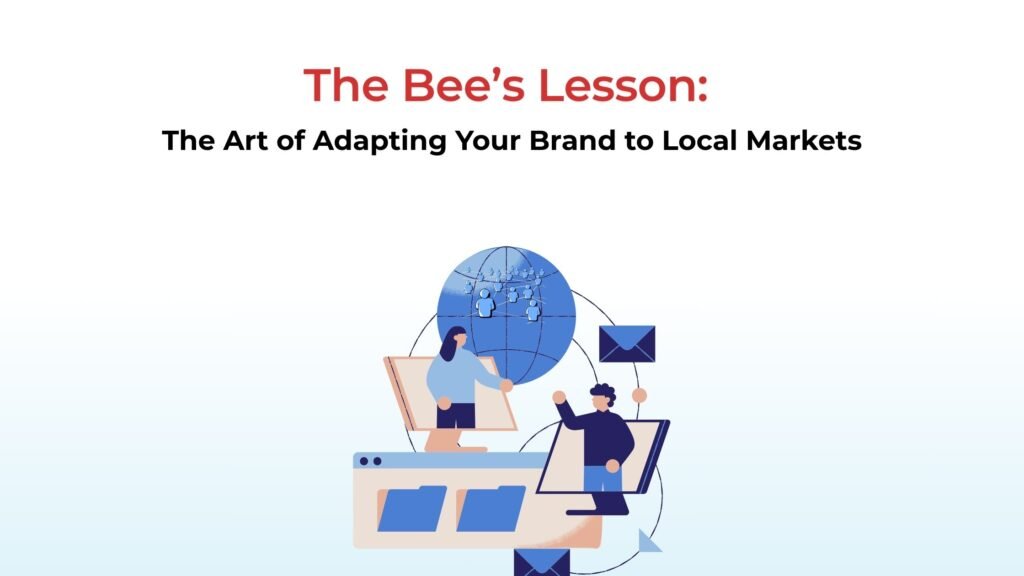
Have you ever watched a honey bee (with its black and gold body) in a field?
It could be any field:
- The fields of Tuscany,
- The fields of Kyoto, or
- The fields of India
Wherever it is, the bee has its own set of characteristics that don’t change.
It wakes with the sun with its wings humming. It seeks nectar with unshakable focus, and guards its hive with the same fierce loyalty.
Whether it hovers over tulips in Amsterdam, lavender in Provence, or wild marigolds in India, its rhythm never changes, its purpose never wavers, its flight is always precise, and its dance is always instinctive.
A bee is always a bee.
What changes is the honey it makes. The honey is always different in different locations. Taste it and you’ll know exactly where the honey belongs.
- Golden Sunflower in Tuscany.
- Delicate Sakura in Kyoto.
- Lush Mustard in India.
The bee never changes its essence, yet its creation becomes local– which is a reflection of the flowers, soil, and season around it. And because of that, every market welcomes it. No field rejects a bee because it knows how to be part of its ecosystem.
That’s brand localization.
Most companies expanding internationally behave like blunt hammers. They take their existing campaigns, slap on a translation, and wonder why the market shrugs.
Their honey tastes imported and synthetic.
But the brands that thrive globally?
- They move like the bee- essence intact, experience adapted.
- Their product, packaging, messaging, and even micro-interactions absorb the flavors of the local culture, so buyers feel- “This is for me.”
Because global growth isn’t just about crossing borders, it’s about crossing thresholds of trust. If the audience can’t taste “home” in your brand, you’re just another outsider buzzing around.
In this guide, we’ll show you how to make your brand the bee the world wants to host– trusted, accepted, and profitable in any market you land in.
Table of Contents

What Is Brand Localization? (Brand Localization Meaning)
Brand localization is the art and strategy of making a global brand feel at home in a local market.
It is not just translating your website or changing your ads. It is the full alignment of your product, experience, and storytelling with local habits and expectations- while protecting the core identity that makes your brand desirable in the first place.
A localized brand achieves two things simultaneously:
- Familiarity: Customers feel, “This belongs here. It understands me.”
- Aspirational Value: It still carries the global prestige that makes the brand special.
Brand Localization Examples:
When a brand enters a new market as a complete outsider, it struggles to gain trust. Consumers may admire it, but they won’t buy it. Localization reduces that psychological distance.
Lets see how the following brands approached international growth:
- B&O (Bang & Olufsen) – Sound That Resonates Globally
The Danish audio brand understands that sound preferences differ by market.
In Asia, it adjusted tuning for brighter vocals and created exclusive finishes like bronze and gold tones that appeal to luxury buyers in the Middle East.
Result: Instead of being a foreign gadget, B&O became a lifestyle statement aligned with local taste.
- Dyson
The British home-tech brand known for its vacuums and hair tools studied humidity and hair types across Asia.
Its supersonic hair dryer got a gentler heat setting for markets like Japan and Singapore, where hair texture and climate differ.
Result: Dyson moved from being a luxury gadget to a trusted personal-care tool locally.
- IKEA
Known for its DIY furniture, IKEA realized that urban India has smaller homes and fewer people accustomed to assembling furniture themselves.
It downsized products, introduced pre-assembled options, and even added spicy Indian snacks in its cafeterias.
Result: A Scandinavian brand became part of Indian apartment life.
In short:
Brand localization is the bridge between global ambition and local acceptance.
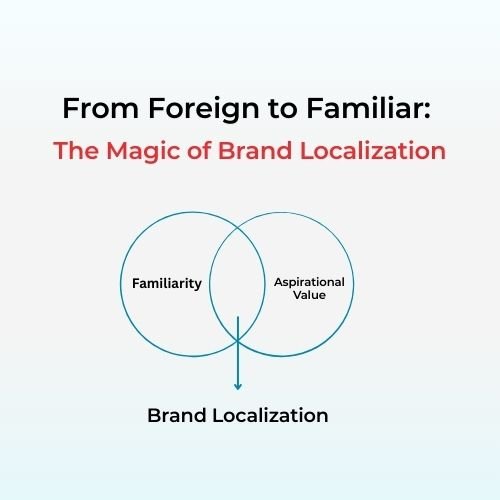
Why Brand Localization Matters in 2025 and Beyond
Going global today is easy. Thriving globally is not.
You can ship products to a new country, launch a translated website, and even set up a local store. However, if your brand doesn’t connect locally, people may click and browse, but they won’t convert.
Curiosity without familiarity rarely pays the bills.
Brand localization is the difference between being present in a market and being accepted by it.
Here’s why it’s a profit driver and growth enabler in 2025:
1. Faster Market Penetration and Higher Revenue
Localization reduces entry friction. When customers recognize their own habits, flavors, and culture in a brand, adoption is faster.
- Huawei rose to the top in multiple international markets by tuning its offerings to local priorities.
- Europe: Marketing highlighted camera quality, matching the selfie and travel photography trend.
- Middle East: Focus shifted to battery and privacy, aligning with daily usage habits.
Localized messaging and product tweaks cut the trust-building period and accelerated sales growth.
Takeaway: A brand that mirrors local life achieves revenue faster than one that just arrives with a global template.
2. Deeper Customer Loyalty Through Cultural Resonance
Customers don’t just buy products- they buy stories they can connect with.
- Starbucks built loyalty by embedding itself into local rituals.
- Japan: Sakura-themed lattes and cherry blossom merchandise every spring.
- China: Tea-based drinks and Mooncake collaborations for Mid-Autumn Festival.
- India: Spice-infused beverages for local palates.
Starbucks turned seasonal events into brand events, creating repeat visits and emotional attachment.
Takeaway: Localization converts a purchase into a ritual, and rituals build loyalty.
3. Increased Visibility in Marketing and SEO
Even the best product struggles if people can’t find or relate to it online.
Localized websites and campaigns match search habits, social trends, and shopping behaviors.
- Brands that translate and adapt content with local keywords see 50–70% higher organic reach, according to CSA Research.
Social media algorithms also favor locally resonant content, amplifying campaigns without extra ad spend.
Takeaway: Localization isn’t just cultural- it’s algorithmic leverage for visibility and lower acquisition costs.
4. Brand Equity That Lasts
A global brand that fails to localize remains a visitor. One that integrates into local culture becomes a neighbor.
- Hermès in China introduced zodiac and festive editions, making its products meaningful as gifts for local celebrations.
- Tiffany & Co in Japan localized messaging around life milestones and seasonal gifting, connecting emotionally with customers who seek symbolism in purchases.
Takeaway: Brands that localize increase relevance without diluting global prestige, building long-term market protection against domestic competitors.

Who Needs Brand Localization?
A bee can fly anywhere-but it only thrives where the flowers accept it.
The same rule applies to brands. Any company crossing borders needs localization- but the intensity and method vary by industry. Some sectors demand functional adaptation, others cultural immersion, and some symbolic alignment to protect prestige.
Here’s where localization is necessary:
1. E-Commerce and Consumer Brands
- Why: Shoppers abandon carts the moment something feels foreign- whether it’s unfamiliar sizing, payment methods, or product names.
- Example: Kellogg’s in India expanded beyond cold cereal to launch chocos, oats, and regional breakfast solutions that align with local eating habits.
- Key Insight: Localization here is product and experience-driven- from packaging language to payment gateways.
2. SaaS and Technology Companies
- Why: Software that isn’t localized feels unusable-UI, currency, and support must speak the user’s world.
- Example: Huawei adjusts camera filters, app integrations, and UX flows to match local user habits.
- Key Insight: In tech, usability = adoption. Functional localization directly drives market penetration.
3. Hospitality and Travel
- Why: Guests don’t just visit- they expect comfort in familiarity. Localized experiences drive trust and reviews.
- Example: Airbnb’s country-specific landing pages and local host storytelling make the brand feel native everywhere.
- Key Insight: Localization here is emotional and trust-based, influencing direct revenue and repeat visits.
4. Healthcare and Pharmaceuticals
- Why: Compliance and clarity aren’t optional- misunderstood dosage or labeling can cost lives.
- Example: Pfizer and Novartis rely on localized labeling and patient communication to meet regional medical regulations.
- Key Insight: Localization is a risk shield here, ensuring regulatory approval and patient trust.
5. Education and eLearning
- Why: Learning is cultural. Courses built for one audience fall flat abroad without language, reference, and example adaptation.
- Example: Coursera and Duolingo thrive internationally by embedding local examples, idioms, and certifications.
- Key Insight: Engagement rises when content speaks to the learner’s context.
6. Legal and Financial Services
- Why: Precision is survival. Contracts, compliance docs, and financial dashboards must be linguistically and legally correct for local systems.
- Example: HSBC operates as the “World’s Local Bank,” ensuring regulatory and linguistic localization in every market.
- Key Insight: Localization here is trust and risk mitigation.
7. Gaming and Entertainment
- Why: Players and viewers demand cultural immersion- poor translation or irrelevant references kill engagement.
- Example: Netflix not only translates subtitles but changes artwork and recommendations by region to match viewing psychology.
- Key Insight: In this sector, localization drives virality and stickiness.
8. Manufacturing and B2B Brands
- Why: Technical documents, safety manuals, and presentations must speak the buyer’s language to drive adoption and avoid liability.
- Example: Siemens and Caterpillar maintain localized documentation and training to meet local standards.
- Key Insight: B2B localization is about reducing friction in the buying process and ensuring operational safety.
If your business crosses a border- digital or physical- localization isn’t a marketing choice. It’s the cost of entry to relevance and trust.

How To Build a Strong Brand Localization Strategy (Key Components)
A bee doesn’t visit every flower the same way. It studies, adapts, and takes what makes its honey thrive. Your brand must do the same in every market.
A winning localization strategy has nine core components that work together to turn your brand from a foreign visitor into a familiar presence:
1. Market Research: Know the Field Before You Land
- Purpose: Identify local consumer behavior, buying triggers, cultural nuances, and language variants.
- Example: Louis Vuitton studies gifting habits and cultural symbolism in each market, making its launches relevant to local celebrations.
- Takeaway: Without research, localization becomes guesswork—and guesswork is expensive.
2. Language Localization: Speak the Emotion, Not Just the Words
- Purpose: Move beyond translation to tone, dialect, readability, and cultural idioms.
- Example: When Häagen-Dazs (Ice-cream brand) entered France, it didn’t rely on English slogans.It introduced French-language campaigns about indulgence and romance, aligning with local dessert culture and emotional cues.
- Takeaway:The right words transform.They turn a global message into a local emotion people want to respond to.
3. Visual Localization: Let Design Travel Without Misfiring
- Purpose: Adapt colors, symbols, typography, and layouts to avoid cultural friction.
- Example: McDonald’s uses red and gold dominance in Asia to signal prosperity but muted palettes in Europe to reflect premium cues.
- Takeaway: A single color can invite or alienatede- sign carries unspoken language.
4. Cultural Relevance: Fit Into Local Life Without Losing Essence
- Purpose: Identify local do’s and don’ts, humor, etiquette, and consumption rituals.
- Example: Starbucks Sakura lattes in Japan and Diwali specials in India turn global products into seasonal cultural rituals.
- Takeaway: When your product becomes part of local celebrations, you stop being a guest and start being a tradition.
5. Legal and Compliance: Protect the Hive Before You Fly
- Purpose: Align with regulatory requirements on packaging, labeling, advertising, and safety.
- Example: Pfizer ensures every market meets language, dosage, and disclosure mandates to avoid legal blocks.
- Takeaway: One overlooked regulation can cost you the market.
6. Platform and Device Compatibility: Meet Customers Where They Are
- Purpose: Adapt UX, app flow, and device preferences to local technology habits.
- Example: WeChat integrations in China or Line-based campaigns in Japan outperform global “one-size” apps.
- Takeaway: If your brand can’t fit the local device ecosystem, you’re invisible.
7. Multilingual SEO and Digital Adaptation: Be Found to Be Chosen
- Purpose: Optimize websites, content, and metadata for local keywords and search behavior.
- Example: Booking.com dominates search because every page is language- and intent-specific, not just translated.
- Takeaway: If you’re not local in search, you’re a ghost in the market.
8. Payment Gateways & Currency Display: Remove Friction at Checkout
- Purpose: Enable local currency, popular payment methods, and tax visibility.
- Example: Amazon India offers UPI, cash-on-delivery, and EMI options, converting curiosity into completed sales.
Takeaway: Global desire fails if local payment is a hurdle.
9. Customer Support Localization: Loyalty Begins After the Sale
- Purpose: Provide service, returns, and chat support in local language and tone.
- Example: Huawei’s localized support centers improve retention and reduce churn in new markets.
Takeaway: Support in their language turns buyers into repeat buyers.
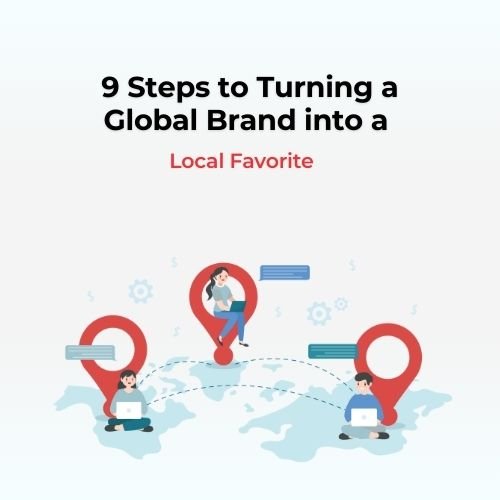
How to Avoid Common Pitfalls in Brand Localization
A bee doesn’t taste every flower. It knows which ones will produce the honey its hive survives on.
Brands that enter global markets without this discernment often regret it.
Even world-class brands have stumbled in localization because they confused presence with acceptance. Here are some critical mistakes and how leading brands avoid them:
1. Mistaking Translation for Localization
- The pitfall: Many brands believe a multilingual website or translated packaging equals localization. It doesn’t. Language without context is noise.
- Example: Tiffany & Co. never just translated its “Love & Engagement” campaigns in China. Instead, it wove Chinese numerology and symbolism into its Valentine’s campaigns- understanding that “520” (phonetically similar to “I love you”) drives gift-buying spikes.
- Lesson: Localization is emotion in context. Translation only moves words; localization moves hearts.
2. Ignoring Cultural Status Drivers
- The pitfall: Brands assume their global positioning transfers seamlessly, ignoring local status symbols and social hierarchies.
- Example: Blancpain failed in early Chinese launches because mechanical complexity-its main prestige driver in Europe- did not initially resonate in a market that equated luxury with visible logos and modernity. Competitors like Rolex outperformed with culturally recognizable signals.
- Lesson: Study local status cues. Is your audience buying heritage, visibility, or innovation?
3. Over-Centralization From Headquarters (one-size-fits-all campaigns)
- The pitfall: Global HQ dictates campaigns, ignoring local adaptations that markets desperately need.
- Example: Hermès thrives in Japan because its local team curates seasonal collections and store experiences around hanami (cherry blossom viewing) and local gifting rituals. Contrast this with Burberry’s earlier struggles in Asia, where its UK-heavy creative direction failed to connect until it introduced localized capsule collections and celebrity campaigns.
- Lesson: Local autonomy with central brand guardianship is the winning balance.
4. Misreading Local Consumption Rituals
- The pitfall: Brands enter markets without understanding when, how, and why consumers buy.
- Example: Starbucks China succeeded not by selling “morning coffee” but by reinventing itself as a social status café for afternoon gatherings, even offering mooncakes for the Mid-Autumn Festival.
- Lesson: Adapt your product’s role in daily life, not just its packaging.
5. Neglecting Regulatory and Symbolic Risks
- The pitfall: Overlooking compliance and cultural sensitivities leads to retraction or distrust.
- Example: Marilyn (Chinese lingerie brand) failed in the Middle East due to packaging imagery violating local modesty standards, despite the product itself being acceptable. Conversely, LVMH thrives globally because every launch passes dual filters: regulation and symbolism.
- Lesson: A product can be legal but socially unwelcome. Great localization respects both.
Brands that succeed globally localize like bees- they collect only from the flowers that will yield acceptance, loyalty, and profit.

Localization vs Globalization vs Translation- What’s the Difference?
A bee may fly anywhere, but it knows when to change its honey, when to change its route, and when to just fly straight.
Brands face the same decision: translate, localize, or globalize. Mixing them up is why many international expansions fail
Visual Comparison Table:
Aspect | Translation | Localization | Globalization |
Core Focus | Converting text into another language | Adapting language, culture, and experience | Creating one brand approach for all the markets |
Depth | Surface-level | Market-specific and emotional | Standardized with minor local tweaks |
Speed to Market | Fast | Moderate | Fast once the framework is built |
Goal | Understandable | Acceptable + Relatable | Recognizable + Consistent |
Risk if Misapplied | Feels robotic or tone-deaf | Costs more but builds loyalty | Can feel generic and distant |
Example Brand Use | IKEA manuals– translated into 30+ languages | Starbucks in China– tea flavors & mooncakes | Apple iPhone launch– same product globally |
Decision Guide: When to Use Which
- Translation – Use when:
- Product functionality is universal, and context is minimal.
- Example: Technical manuals, legal documents, safety instructions.
- Localization – Use when:
- Cultural resonance and trust impact adoption.
- Example: Starbucks localized menus in China, Tiffany’s 520 campaigns.
- Globalization – Use when:
- The brand thrives on universal identity and global aspirational appeal.
- Example: Apple, Nike, Louis Vuitton maintain near-identical branding worldwide.
The Strategic Balance
Most global brands mix all three strategies:
- Apple: Globalized product + localized App Store and support.
- Louis Vuitton: Global brand DNA + localized capsule collections.
- Huawei: Global product line + deeply localized UX (languages, local app stores).
The takeaway:
Translation gets you understood.
Globalization gets you recognized.
Localization gets you invited into their world.
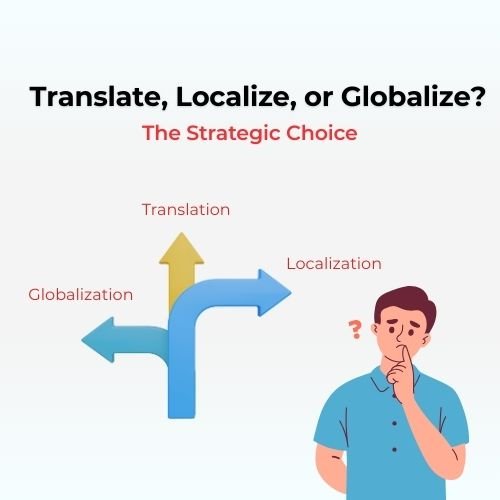
Build vs Buy: Should You Localize In-House or Hire a Brand Localization Company?
Global expansion isn’t just a map problem- it’s a resource problem. Every brand that crosses borders eventually hits the same wall:
Do we build an internal localization team or trust an external partner to do it faster, better, and at scale?
Get it wrong, and you’re either bleeding money on a bloated in-house setup or stuck with a partner who dilutes your brand voice.
Get it right, and you get speed, cultural precision, and market acceptance without losing your core iden
This is the real build-vs-buy choice, which speaks about control, scalability, and survival in global markets.
Option 1: Building In-House
Pros:
- Tighter brand control: Your team lives and breathes your brand voice.
- Faster iteration for top markets: Changes can be immediate without vendor back-and-forth.
- Institutional knowledge: Insights from one market can fuel future expansions.
Cons:
- High upfront cost: Recruiting native linguists, cultural consultants, and localization PMs is expensive.
- Slow scalability: Managing 5 languages is feasible; managing 20+ can break internal teams.
- Tooling overhead: Need TMS, CAT tools, QA processes, and integration with your CMS/marketing stack.
Who succeeds in-house?
Brands with large, stable markets and high brand sensitivity, like Louis Vuitton, which relies on internal teams to control every nuance of messaging and creative output.
Option 2: Partnering with a Brand Localization Company
Pros:
- Access to global expertise immediately: Agencies bring native linguists, cultural specialists, and compliance experts in one ecosystem.
- Faster market entry: Ideal for multi-market launches where speed trumps building infrastructure.
- Tech-enabled efficiency: Established providers use TMS, automation, and QA frameworks you don’t need to build.
Cons:
- Less immediate control: Requires tight brand guidelines and review processes to maintain voice.
- Dependency risk: Poor partner selection can create bottlenecks or inconsistent quality.
Who succeeds with partners?
- Companies as large as Huawei leverage specialized localization agencies to adapt UI/UX and marketing for 170+ countries-impossible to manage fully in-house without crippling overhead.
- Starbucks partnered for market launches to navigate regulatory, cultural, and seasonal campaigns faster than an internal-only team could.
The Hybrid Model: Best of Both Worlds
Most thriving global brands start with partners, then hybridize:
- Internal team handles brand voice, approvals, and high-stakes campaigns.
- External partners handle multi-market production, regulatory adaptation, and surge workloads.
Strategic tip:
Treat localization like global supply chain design. Build core strengths, outsource scale.
That’s how luxury and tech giants move fast without losing brand DNA.
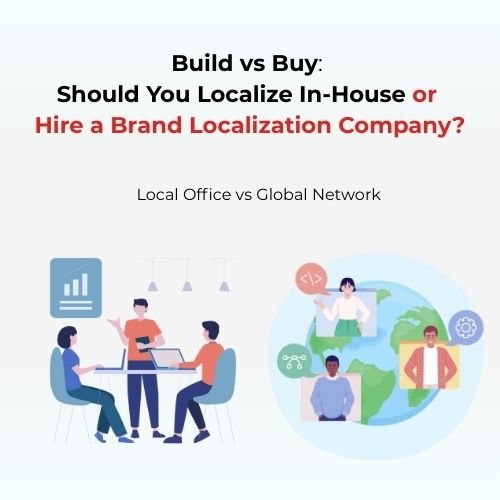
Choosing the Right Brand Localization Firm
The localization partner you choose determines whether your brand is accepted or overlooked in new markets.
The right firm combines cultural insight with operational precision to ensure global impact.
Red Flags to Avoid:
- Pure translation focus – If they only offer word-for-word translation, your campaigns will feel hollow.
- No industry specialization – Luxury, tech, pharma, and FMCG each require different sensitivities.
- Opaque workflows – Without clear QA and brand review checkpoints, you risk inconsistent tone.
- Single-market experience – Global scalability is a different game than bilingual support.
Must-Have Capabilities
- Native linguists + cultural strategists: Not just translators; advisors who prevent brand misfires.
- Experience in multi-market launches: Proven track record in at least 5+ regions.
- Integrated tech stack: TMS, CAT tools, QA automation for consistency across languages.
- Regulatory expertise: Especially for healthcare, luxury, and finance, where compliance risks are high.
- Referenceable success stories: If they can’t name brands they’ve helped scale, walk away.
Key Questions to Ask Before Signing
- How do you handle brand tone and emotional nuance across markets?
- Can you scale to 10+ languages simultaneously without delays?
- What QA and cultural review process do you follow before go-live?
- Do you provide insights, not just translations, to refine market strategy?
- Can you show proven ROI from past localization projects?
A strong localization partner is not a vendor- it’s an extension of your brand team. Choose the one who can defend your identity while opening doors in every market.

FAQs
What is the difference between localization and internationalization?
Internationalization prepares a product for multiple markets; localization adapts it to feel native in each market.
How much does localization cost?
Costs vary by content volume, language count, and complexity, but smart localization is an ROI driver, not just an expense.
How long does localization take?
A small project can take days, while multi-market campaigns may need weeks to months, depending on content type and review cycles.
Can small businesses benefit from localization?
Absolutely. Even lightweight localization can boost trust and conversions in new markets without enterprise budgets.
Where to find video localization tools that preserve brand tone across languages?
Use AI-enabled dubbing and subtitling platforms like Papercup or Synthesia, which maintain brand style and clarity.
What tools alert teams to localization errors detected in generative brand mentions?
Social listening tools like Brandwatch or Sprinklr can flag mistranslations and risky cultural references in real time.
Signing Off
Markets used to reward the loudest brands. Today, they reward the most contextually intelligent ones.
Localization is no longer a marketing add-on; it’s a strategic moat. In the next five years, the brands that scale globally without cultural fluency will be replaced by those that master micro-adaptation—not just in language, but in UX, social cues, payment habits, and even AI-generated content tuned to local sentiment.
Global expansion is no longer about planting flags. It’s about planting roots—because digital audiences can spot an outsider instantly.
The next wave of market leaders will act less like advertisers and more like cultural participants.
- They’ll enter markets with localized micro-campaigns that feel like they were born there.
- Their products will anticipate regional needs before locals articulate them.
- Their storytelling will pass the “neighbor test”—does this feel like it comes from here?
Brand localization is how you stop renting attention and start owning trust.
The brands that invest now won’t just sell- they’ll shape culture in every market they touch.
The future doesn’t belong to the brands that arrive everywhere.
It belongs to the brands that are invited to stay.
